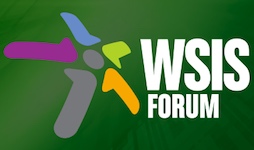E-learning: Is software the key to access to knowledge in the digital age?
15 Jun 2017 09:00h - 10:45h
Event report
[Read more session reports from WSIS Forum 2017]
The session, organised by UNESCO, tackled the issues of preserving and sharing software sources as part of the human heritage. Issues such as education and coding, legality, open source, archiving and awareness on source code importance, were discussed.
The moderator – Mr Davide Storti (Knowledge Societies Division, UNESCO) pointed out that the ways in which source code is linked to Sustainable Development Goals (SDGs) are multiple, and can empower people using ICTs as well as creating new digital public area services. As an example of UNESCO’s good practices, he mentioned promoting the ‘Open Solutions’ project and reports such as Forum on the impact of open courseware. He also said that ‘in order to protect digital heritage, it is important to preserve both hardware and software’. The preservation of software heritage, innovation and research, together with digital skills, are key tools for understanding the digital world.
Mr Roberto Di Cosmo (Director of Software Heritage project, Inventors for the Digital World – INRIA) stressed that software fuels innovation and is essential for the industry, scientific research, and access to all information. Source code is not only about our technological knowledge, but also about our political, social and economic activities. It changes our thinking towards more computational and problem solving approaches. According to Di Cosmo, we lack a universal catalogue of existing codes, a universal archive for all codes ever written, research instruments and scientific reproducibility of the software. Software Heritage is a reply to these problems and has the goal of collecting, preserving and sharing the source code of all publicly available software.
Ms Natasa Milic-Frayling (Chair of Data Science at the School of Computer Science, University of Nottingham, UK) focused on the life-cycle of software and its ‘rare use’ characteristics. Once the code is written and used, it is soon updated and the initial code is lost. Using the cloud to backup saves the original documents, but ‘if IBM or Microsoft stop working now, in a couple of years, all will be gone’, said Milic-Frayling. The cloud is becoming more important and hardware is being seconded, but there is no digital continuity of software and the ICT community should take better care of the code. Moreover, she said that users should state their demand and new economic models should be developed for achieving the sustainability of digital continuity.
‘Old codes represent the ingenuity of humanity’, noted Mr Jonas Oberg (Founder, Free Software Foundation Europe (FSFE), Sweden). FSFE works to preserve code, free or not, and initiating code provides a historical perspective and understanding the cultural origin that the creator put in it. To make sense of all the code available, according to Oberg, the ICT community should make preservation automatic. Only computers can keep up with all codes being created. He added that regulatory, legislative, and technical needs have to be provided for this to happen. Most software is proprietary and when companies go down, so does the code. Oberg proposed the library model – one copy on the side for public use – as a possible solution to protect software even after companies owning it are no longer there.
Mr Daniel Burgos (Chair on eLearning, UNESCO, Spain) highlighted software as the main working tool of universities, hospitals, and businesses. According to Burgos, software is the key to knowledge due to its three characteristics. First, it is a living thing, in the sense of creation and updates. Second, it is a way of expression of cultures. Third, it is the ‘middle layer to this world’. He further added that there is a need to protect software in the way in which anthropology protects dying languages and cultures. Burgos emphasised that researchers should explain the benefits of source code preservation to users and raise awareness on its fragility.
by Jana Mišić
Related topics
Related event

